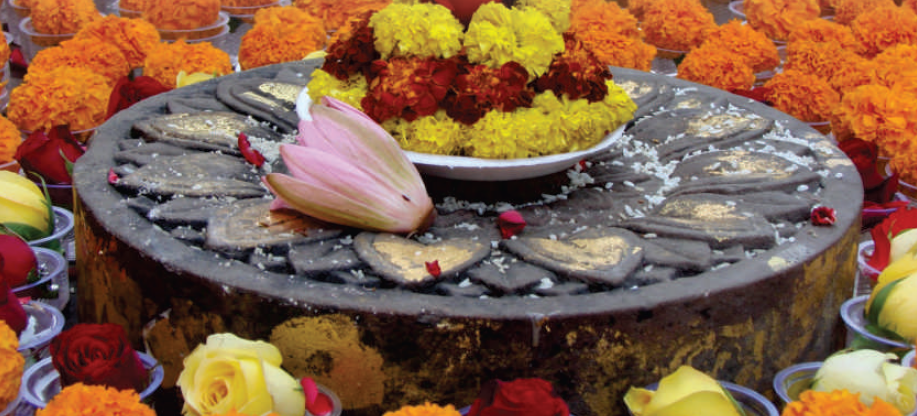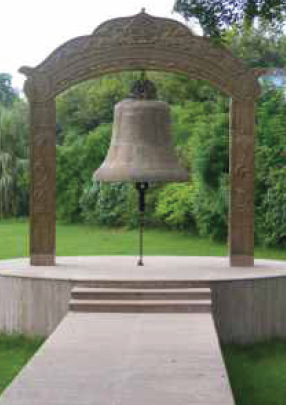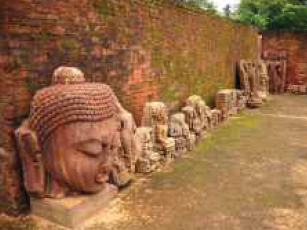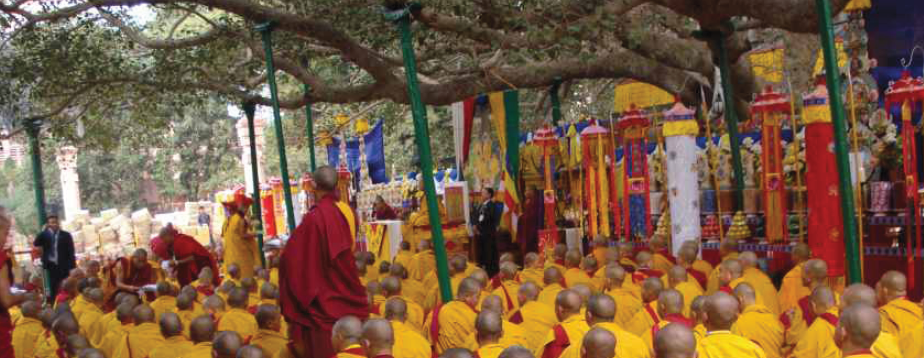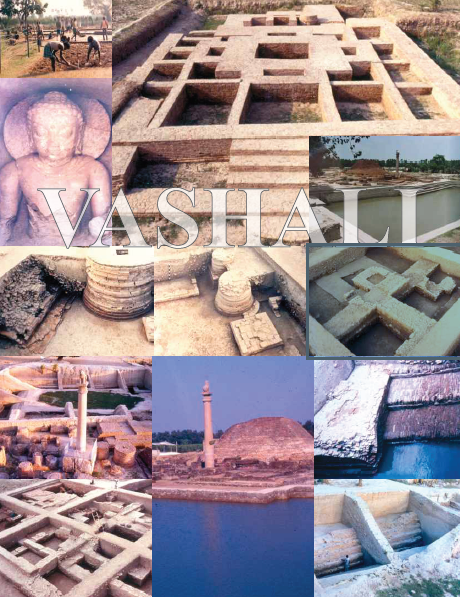Buddhist circuit: Bodh Gaya, Nalanda, Rajgir, Vaishali, Vikramshila
This is a collection of articles archived for the excellence of their content. Readers will be able to edit existing articles and post new articles directly |
Buddhist circuit: Bodh Gaya, Rajgir, Nalanda
By Dr. Vinita Gardner
India Harmony VOLUME - 1 : ISSUE – 6 SEPTEMBER-OCTOBER, 2012
The pivotal point from where the inveterate traveller, the culture-vulture, the avid historian, the blessed Buddhist or the Jain journeying to keep a rendezvous with the genesis of his non-violent faith, can reach sublime fulfilment, is Patna.
Metamorphosing through the millennia into the modern Patna, the original imperial metropolis was Patliputra which played host to many distinguished Hindu dynasties which held sway over the memorable Magadh Empire. However, even before that there was a time when....
Rajgir, was the capital of the Magadh Mahajanpad (State) when Patliputra was not formed. In those days it was called Rajgrih. Rajgir or Rajgrih, means the home of Royalty. Situated in a scenic valley, amidst a fascinating complex of temples and monasteries, it was one of the Buddha's favorite places; particularly Jivekarman monastery, where The Enlightened One spent a lot of time.
The teachings of Buddha were penned down at Rajgir and it was also the venue for the first Buddhist Council. Today Rajgir has come up as one of the most important pilgrimage centres for devout Buddhists. Rajgir also has some very beautiful Hindu and Jain temples which attract Hindus and Jains to this place.
Not merely as a place of worship, but Rajgir has also come up as a significant health and winter resort with its warm water ponds containing therapeutic medicinal properties for the cure of various skin ailments.
An added attraction of Rajgir, 92 kms from modern Patna, is the Ropeway which takes you uphill to the Shanti Stupa and Monasteries built by the Japanese Devotees on top of the Ratnagiri hills. The places around Rajgir are famous for stone sculptures and bowls and you can harvest a rich haul of memora bilia of your visit here!
If you time it right, you can treat yourself to the colorful festival of classical and folk dances organized here in October or witness the Chhath Puja or Sun worship held twice a year in April-May and in October - November in Surya Temple, the Sun temple of Surajpur Baragaon, nearby.
The world famous Nalanda University, approximately 12 kms from Rajgir, many times host to the enlightened Buddha, shot to fame as a result of the enlightened descriptions of the celebrated Chinese traveller, Hieun Tsang, who stayed here in the 7th century A.D.
The benevolent Gupta kings patronized these
monasteries, built in old Kushan architectural
style, in a row of cells around a courtyard.
Emperor Ashoka and Harshavardhana were some
of its most celebrated patrons who built temples,
monasteries and viharas here.
In this most ancient seat of learning, the first residential international university of the world, 2,000 teachers and 10,000 monks students from all over the Buddhist world lived and studied here. In 1951 an international Centre for Buddhist Studies was established. Nearby is the famous Bihar Sharif, where an annual Urs is celebrated at the Dargah of Malik Ibrahim Baya.
The immensely impressive Nalanda University Ruins Archaeological Complex, spread over an approximate area of 14 hectares, has all its edifices of red brick and a profusion of beautiful gardens!
The buildings are divided by a central walk way that goes south to north. The monasteries or "Viharas" are east of this central alley and the temple or "Chaiyas" to the west.
The enormous pyramidal mass of the Temple No.3 is impressive and from its top commands a splendid view of the entire area. It is surrounded by smaller stupas, many of which are aesthetically studded with small and big statues of the Lord Buddha in various poses or "Mudras".
The Nalanda Archaeological Museum, which incorporates a riveting collection of copper plates and stone inscriptions, coins, pottery and samples of burnt rice (12th century AD) found among the ruins here, has two enormous terra-cotta jars of the first century standing intact behind the museum in a shaded enclosure.
Opposite the entrance to the ruins of the university and houses, there is a small but beautiful collection of Buddhist and Hindu bronzes and a number of undamaged statues of the Lord Buddha that were found in the area.
Less than 20 kms from Nalanda lies Pawapuri, a holy place of pilgrimage for the Jains! Known also as Apapuri, Lord Mahavira, the final Tirthankara and founder of Jainism, breathed his last at this place, and was cremated here around 500 B.C. It is said that the demand for his ashes was so great that a large amount of soil was removed from around the funeral pyre, creating the water tank!
A marble temple, the “Jalmandir”, was later built in the middle of the tank, and is now a major pilgrimage spot for Jains and a visit to this sacred spot, an absolution of their sins!
Devout Jains desirous of visiting the sacred Jalmandir and the Jain temple of Samosharan here, can conveniently take a bus or taxi from Patna, Rajgir, Gaya or other major cities of Bihar to visit Pawapuri.
While the temple of Vishnupad, picturesquely perched on the bank of river Falgu in Gaya, attracts innumerable pilgrims from all over the world, Gaya itself is considered an immensely sacred centre of pilgrimage for the Hindus! Oblations are offered here for the salvation of the dead parents and forefathers of pilgrims journeying here.
Bodhgaya, undoubtedly the holiest amongst holy places of devout Buddhists the world over, is where Prince Siddharatha attained supreme enlightenment and became Buddha, The Enlightened One! The birthplace of Buddhism, the present Bodhi Tree here, is fifth in succession to the original tree under which Lord Buddha received his Awakening and attained enlightenment.
The ancient Mahabodhi Temple, the railings and the Ashokan pillar are of great historical as well as architectural importance. The many modern monasteries of Japan, Thailand, China, Tibet, Mayamar, Bhutan and Sri Lanka, architecturally representative of their respective countries, are extremely colorful and remain humming with religious activities, in an ambience of benevolent benediction for your searching soul !!
Archaeological discovery
India Harmony VOLUME - 1 : ISSUE – 6 SEPTEMBER-OCTOBER, 2012
RAJGIR - An important discovery
Will a Buddhist stupa dating back to the fifth century B.C., recently discovered at Rajgir in Bihar, yield a long-lost casket containing the relics of Buddha?
VASHALI
NALANDA
VIKRAMSHILA
